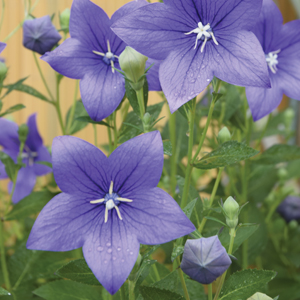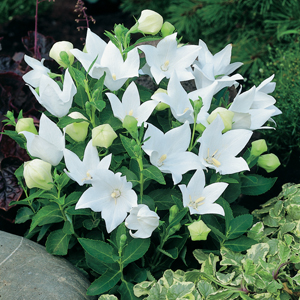Balloon Flower Growing Guide

What is Balloon Flower?
Balloon flower (Platycodon grandiflorus) is also known as Chinese Bellflower or Japanese Bellflower and is a compact herbaceous perennial with a clumping habit. It is part of the Campanulaceae family and is native to China and Japan. Emerging in Spring the plant will quickly get to around 1m in height and as Summer sets in balloon shaped flower buds form. These buds will burst open revealing large star shaped flowers in either pink, blue, purple or white. It is the balloon shape that attracts the attention early in the season. During Spring attractive clumps of serrated, elliptical leaves emerge. Balloon flowers require moist, well drained soil and either a full sun or part shade position in your garden. They are frost and drought hardy. In Winter they will die back and go dormant ready for Spring to hit again.
Benefits of Growing Balloon Flower
Balloon flower are long lasting and heavy blooming, which make them perfect for a cottage or rock garden setting. Also small and compact they are ideal for borders or pots.
How to Grow Balloon Flower
Climatic Zones
Cool to temperate
Plant Size
Height: 60-80cm, Width: 30-40cm
When To Plant Balloon Flower
Plant in early Spring.
Soil Preparation
Balloon flowers like moist, well drained, fertile soil. Dig through well broken down animal manure or compost before planting.
How To Plant Balloon Flower
Plant in full sun to light shade, 45cm apart with the plant crown at soil level. Mulch around the plant to maintain a cool root system and water in well with a liquid seaweed fertiliser.
Balloon Flower Plant Care
Water well through Summer.
Cut spent flower stems to promote a longer blooming season. At the end of the growing season allow the plant to die back a little before pruning to ground level.
Fertilise annually in Spring with a complete fertiliser.
Prefers to be left undisturbed in its position.
As the plants can be rather tall, they may need some support, so use hoops that allow the plant to grow through them or something similar.
Watch out for snails and slugs.








